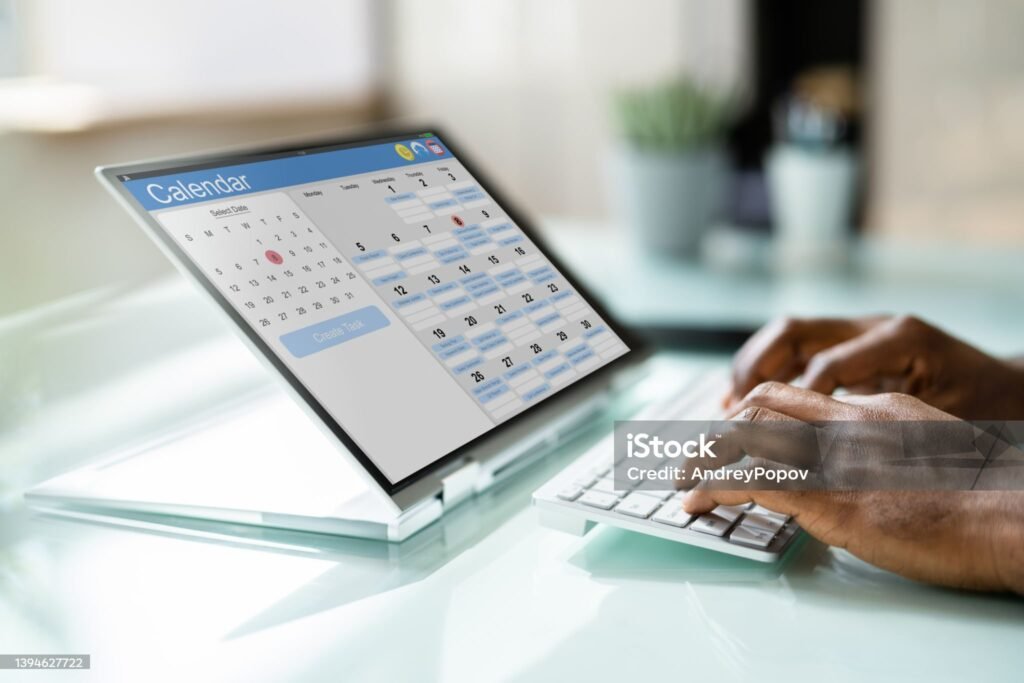Welcome to the world of flavor, where every email is a chance to tempt the taste buds and nourish the soul. In the bustling food and beverage industry, your message needs to be as tantalizing as the aromas wafting from a busy kitchen. Email marketing in this realm is not just about sending out promotions; it’s about creating a sensory experience that whets appetites and leaves readers craving more. In this comprehensive guide, we’ll serve up a feast of strategies tailored for the food and beverage sector. From mouth-watering content creation to pairing the perfect subject line with your digital dish, we’ll dish out the secrets to engaging your customers and keeping them coming back for seconds.
Understanding Your Audience’s Palate: Segmenting for Success
In the culinary symphony of email marketing, knowing your audience’s palate is as crucial as a chef knowing their spices. Segmentation is the key to delivering the right flavors to the right people at the right time.
Tasting Profiles: The Art of Audience Segmentation
Start by dividing your audience into segments based on their tastes and preferences. Are they wine connoisseurs, vegan eaters, or barbecue enthusiasts? By creating detailed customer profiles, you can tailor your content to resonate with each segment’s unique palate. For instance, send your wine lovers emails about the latest vintage from a renowned vineyard, while your health-conscious eaters might appreciate emails with healthy eating tips or new salad options.
Behavioral Bites: Segmenting by Customer Actions
Observe how customers interact with your previous emails. Do they click more on coupons, recipes, or new menu announcements? Use this behavioral data to segment your audience and tailor future emails. For example, frequent clickers on promotional deals can be grouped into a ‘discount delights’ segment for special offers, while those who devour recipe content might enjoy a ‘gourmet tips’ series.
Reservation-Based Segmentation
For businesses like restaurants that take reservations, segment your audience based on their dining behavior. Frequent diners can receive exclusive invitations to tasting events, while those who haven’t booked in a while might be tempted back with a special ‘We Miss You’ offer.
Creating Mouth-Watering Content That Satisfies
Once you’ve segmented your audience, the next step is to serve up content that appeals directly to their culinary cravings. The content of your emails should be as varied and appealing as a well-curated menu, offering something for everyone.
Recipe for Engagement: Shareable Content
Recipes are the bread and butter of content in the food and beverage industry. They offer practical value and encourage engagement. Include recipes that feature your products or align with your brand’s image. For instance, a craft brewery might share recipes for dishes that pair well with their beers, while a gourmet cheese shop could offer guidance on creating the perfect cheese board.
Behind-the-Scenes Flavor: Telling Your Brand’s Story
People love to hear the stories behind their favorite dishes and drinks. Share the journey of your ingredients from farm to table, the inspiration behind your new menu items, or the history of your establishment. Authentic storytelling can create a deeper connection between your customers and your brand, enriching their dining experience.
Visually Tasty: The Importance of Imagery
They say we eat with our eyes first, and this holds true for email content as well. High-quality images of your dishes, ingredients, and beverages can make your emails visually enticing. Include pictures that capture the true essence of your offerings, whether it’s the freshness of your ingredients or the cozy ambiance of your venue.
Interactive Menus: Engage the Senses
Make your emails interactive by incorporating elements like clickable menus that reveal more information or videos that show your chef in action. For example, a fine dining restaurant could include a video of the chef explaining the concept behind the latest dish, making the email content as engaging as it is informative.
Pairing Promotions with Content: The Full Course
Promotions in your email campaigns are like the seasoning in a dish — necessary for flavor but requiring a careful hand to ensure they don’t overpower the main ingredients. The goal is to entice, not overwhelm, blending offers with content for a satisfying experience.
Crafting Promotions That Complement, Not Dominate
Your promotional messages should be woven seamlessly into the narrative of your content. If you’re sharing a summer salad recipe, for example, a promotion for a discount on fresh produce can naturally follow. This method feels less like a hard sell and more like a helpful suggestion, enhancing the value of your emails.
Exclusive Offers for Email Subscribers
Make your subscribers feel special by providing exclusive offers that aren’t available to the general public. This could be early access to a new product, a special discount code, or the chance to reserve a spot at an exclusive event. These offers not only incentivize subscriptions but also build a sense of community and loyalty.
Pairing Content with Timely Promotions
Align your promotions with relevant content based on time-specific events or seasons. An email about winter comfort foods could include a promotion for a hearty stew or a discount on a premium hot chocolate mix. The key is to match the promotion with the content both in theme and timing, creating a natural flow that guides the subscriber from reading to action.
Measuring Appetite: Feedback on Promotions
Use your email campaigns as a test kitchen to gauge the appetite for different types of promotions. Track which offers get the most traction and gather feedback through surveys or direct responses. This feedback can refine your approach to ensure that future promotions hit the sweet spot with your audience.
Fine-Tuning the Frequency: How Often to Serve Up Emails
The question of how often to send out emails is akin to asking how much spice to add to a dish — the answer varies according to taste and intention. Striking the right balance is crucial to keep subscribers interested without overwhelming them.
Understanding Subscriber Preferences
Start by understanding how frequently your subscribers would like to hear from you. This can be done through initial sign-up forms, where subscribers select their preferred email frequency, or through periodic surveys that ask for their feedback. For example, some subscribers might love daily quick recipe ideas, while others may prefer a weekly roundup.
Seasoning with Special Occasions
Just as certain dishes are reserved for special occasions, certain emails should be timed to coincide with seasonal events or holidays. A series of emails leading up to Thanksgiving, for instance, can provide timely content and promotions, while a New Year’s resolution-themed campaign in January can inspire health-conscious choices.
Testing and Learning
There is no one-size-fits-all answer to email frequency, so testing is key. Monitor open rates, click-through rates, and unsubscribe rates to learn what frequency yields the best engagement without causing fatigue. For instance, if you notice an uptick in unsubscribes or a decrease in engagement after increasing the frequency, it may be a sign to scale back.
The Cadence of Content
Consider the type of content you’re sending when determining frequency. Educational content, like a ‘know your ingredients’ series, may be welcomed more frequently than promotional emails. The richness of the content can often dictate how much is too much. A weekly email featuring a deep dive into culinary techniques may be eagerly anticipated, while more frequent sales-focused emails might prompt quick burnout.

Related: Check out our free SEO suite

Measuring the Taste: Analytics for Food and Beverage Email Campaigns
In the culinary world of email marketing, analytics are your taste tests, offering essential feedback on the palatability of your campaigns. By measuring the effectiveness of each email, you can adjust your recipes for success to ensure every message is a Michelin-star-worthy communication.
Savoring the Metrics: What to Measure
Dive into key performance indicators such as open rates, click-through rates, conversion rates, and bounce rates. These metrics give you insight into how well your emails are being received. A high open rate but low click-through rate could indicate that while your subject line is enticing, the content may not be hitting the mark. For a food and beverage business, conversion rates will tell you if those mouth-watering images are tempting enough to drive sales.
Segment-Specific Analytics: Tailoring Your Approach
Just as a sommelier pairs the right wine with a meal, segment-specific analytics allow you to tailor your email campaigns to the tastes of different audience segments. You might discover that Millennials are more likely to click through on emails about sustainable sourcing, whereas Gen Xers are more responsive to family meal deals. Use this data to personalize your campaigns for maximum relevance and engagement.
The Flavor of Feedback: Using Analytics to Improve
Use analytics not just to pat yourself on the back for what worked but to gather insights on what can be improved. Low engagement may suggest that it’s time to refresh your content, or perhaps your call-to-action isn’t as clear or enticing as it could be. For a restaurant, if a ‘Chef’s Special’ email doesn’t lead to many reservations, it might be time to spice up the offer or present it differently.
Digesting the Data: Making Informed Decisions
Ultimately, the goal of analytics is to inform future decisions. Use the data you gather to make strategic choices about content direction, frequency, and design. If a ‘Happy Hour’ promotion consistently performs well, consider making it a regular feature of your emails. If educational content about food origins leads to high engagement, you might expand into storytelling about your suppliers or the journey of your ingredients from farm to kitchen.
The Final Course
In the bustling digital marketplace, your email marketing campaigns can be the window into your brand’s soul, offering a taste of your story, a sip of your ethos, and a bite of your offerings. By employing the strategies discussed, you can ensure that each email you send out is not just another message in the inbox but a memorable experience that leaves your subscribers craving more. As we conclude this culinary journey through the world of email marketing, remember that the most successful campaigns are those crafted with care, attention to detail, and an understanding of the audience you serve. With these ingredients, your email marketing efforts will no doubt yield a bounty of engagement and a loyal following hungry for your next delicious campaign.
READ NEXT:
- How Aisles Can Boost their Website Traffic to 10k in 3 Months! (Our Take!)
- Corporate Cashflow: SEO for Business Banking Websites
- The Art of Crafting Engaging Email Newsletters: Tips and Best Practices
- Email Marketing for Local Businesses: Building Loyalty in Your Community
- The Ultimate Guide to Affiliate Marketing: Strategies for 2023





















